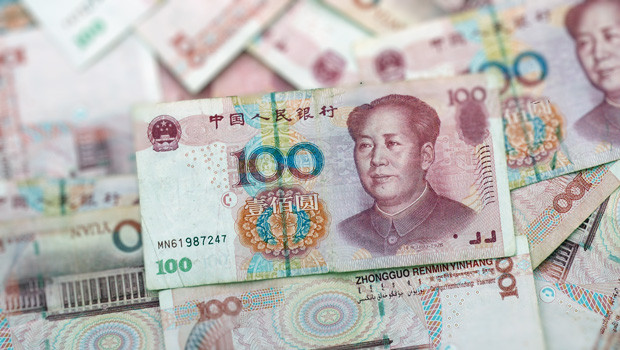Asia report: Stocks higher as China hold one-year MLF rate

Stock markets in the Asia-Pacific region closed higher across the board on Monday, as investors looked forward to a busy week of earnings on Wall Street.
The news of China's central bank decision to leave its one-year medium-term lending rate unchanged also helped to fuel optimism.
“With the March US CPI and retail sales now out of the way, other potential risk drivers are coming into focus, including the May FOMC, the crucial earnings season and the US debt ceiling,” said Stephen Innes at SPI Asset Management.
“In the medium term, however, the economic impact of the banking sector spillovers is still top of mind.”
Innes said the recent stress in US banks had heightened concerns around the growth trajectory, triggering a shift from a market singularly focused on inflation last year to growth concerns this year.
“Still, the prospect of peak inflation tends to comfort equity investors, provided growth holds.”
Markets post gains across the region
In Japan, the Nikkei 225 rose 0.08% to close at 28,514.78, while the Topix index increased 0.41% to 2,026.97.
Yokohama Rubber led the gainers on Tokyo’s benchmark, rising 7.45%, followed by Panasonic and Kawasaki Kisen Kaisha, which rose by 3.53% and 3.03%, respectively.
In China, the Shanghai Composite gained 1.42% to close at 3,385.61, while the Shenzhen Component rose by 0.47% to 11,855.48.
China Aluminum Engineering Corporation and Hisense Electric were among the top performers in Shanghai, surging by 10.06% and 10.02%, respectively.
Hong Kong's Hang Seng Index posted gains of 1.68% to close at 20,782.45.
Lenovo Group led the way, rising by 5.77%, followed by PetroChina and Meituan, which rose by 4.92% and 4.71%, respectively.
In South Korea, the Kospi index edged up 0.17% to close at 2,575.91, with Posco Chemical and Doosan Heavy Industries & Construction among the top gainers, rising 12.26% and 6.75%, respectively.
Australia’s S&P/ASX 200 index gained 0.27% to close at 7,381.50, led by Sayona Mining and Star Entertainment Group, which were ahead a respective 10.26% and 4.89%.
Meanwhile in New Zealand, the S&P/NZX 50 index rose by 0.47% to close at 11,936.15.
Oceania Healthcare and KMD Brands were the leaders in Wellington, rising 2.86% and 2.75%, respectively.
In the currency markets, the yen was last 0.16% weaker against the dollar to trade at JPY 134.01, while the Aussie was off 0.07% at AUD 1.4920, and the Kiwi retreated 0.11% from the greenback to change hands at NZD 1.6133.
On the oil front, Brent crude futures were last down 0.38% on ICE at $85.97 per barrel, while the NYMEX quote for West Texas Intermediate fell 0.45% to $82.15.
PBoC stands pat on one-year lending facility rate
In economic news, the People's Bank of China decided to keep its one-year medium-term lending facility (MLF) rate unchanged at 2.75%, while it added CNY 170bn into the market, which was lower than the CNY 220bn investors had been expecting.
“Policymakers are likely to take a ‘wait and see’ stance in response to the ongoing reopening recovery,” said Duncan Wrigley at Pantheon Macroeconomics.
“The slowdown in headline consumer inflation, to 0.7% year-on-year in March, from 1.0% in February, indicates ample room for monetary policy easing.”
But policymakers were mindful of the danger that excessively loose monetary policy could lead to debt problems down the road, Wrigley added.
“And we think that the gradually broadening recovery holds enough promise for the People’s Bank of China to keep rates steady in the second quarter.”
Elsewhere in China, according to Refinitiv's analysis of the National Bureau of Statistics' house price data of 70 cities, new home prices in China in March fell 0.8% year-on-year, making for the smallest decline since June last year.
However, there was a 0.5% month-on-month increase.
Looking ahead, economists polled by Reuters were expecting China's economy to have grown 4% in the first quarter of 2023, following the fourth quarter print of 2.9%.
The GDP report was set to be released on Tuesday.
Singapore's non-oil domestic exports meanwhile fell 8.3% year-on-year in March, making for the sixth consecutive month of decline.
However, the decline was smaller than February's 15.8% drop, and well below economist expectations for a 20.8% fall.
Non-oil domestic exports to Taiwan fell the most, declining by 30.4%, followed by Malaysia with a 23.1% drop, and China with a 14.1% drop.
Exports to the United States and South Korea meanwhile increased.
Finally on data, Indonesia's exports and imports fell in March, with exports dropping 11.33% and imports by 6.26% year-on-year, making for a decent fall from February's data.
Reporting by Josh White for Sharecast.com.